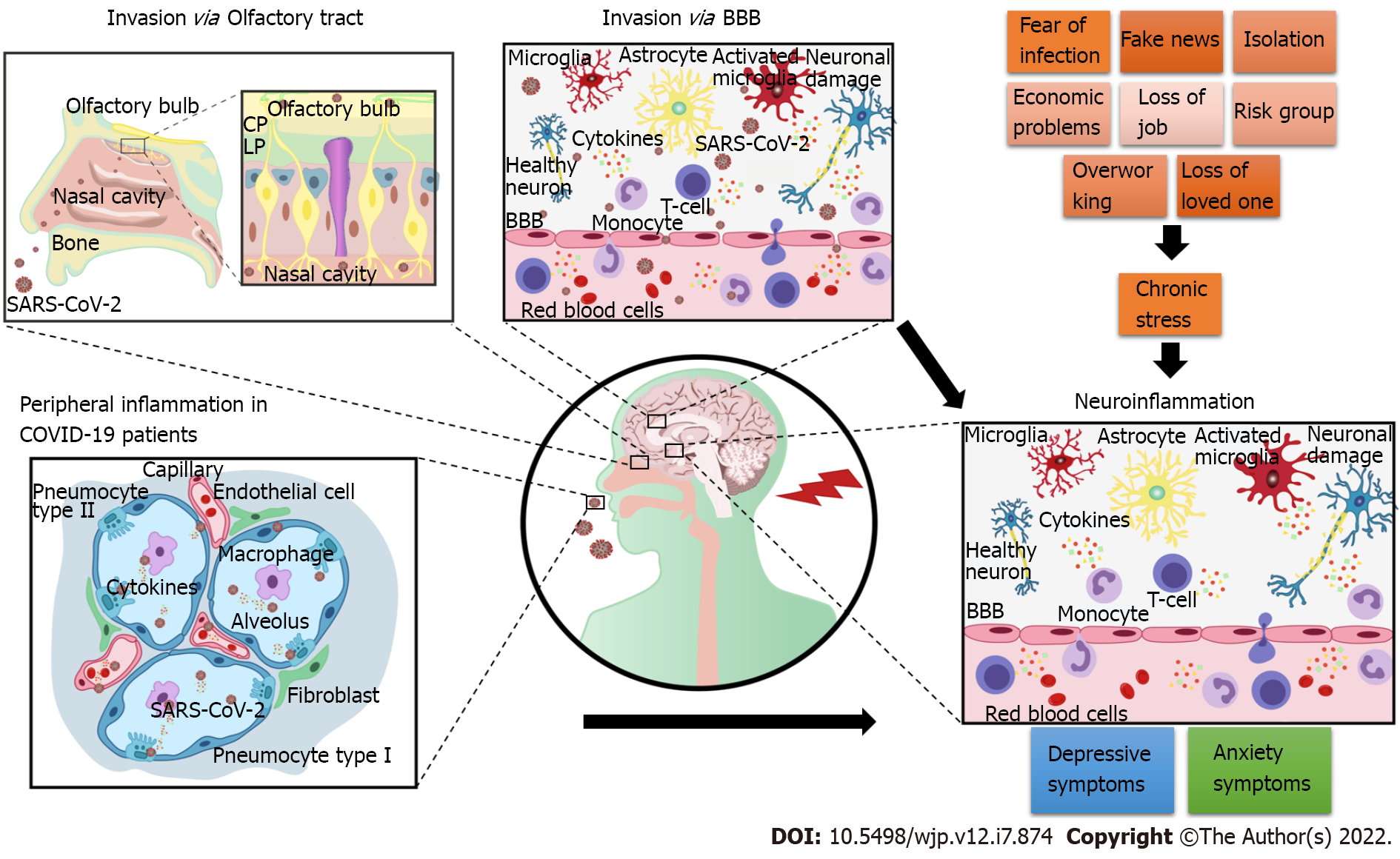Copyright
©The Author(s) 2022.
World J Psychiatry. Jul 19, 2022; 12(7): 874-883
Published online Jul 19, 2022. doi: 10.5498/wjp.v12.i7.874
Published online Jul 19, 2022. doi: 10.5498/wjp.v12.i7.874
Figure 1 Role of neuroinflammation in the development of anxiety and depressive disorders due to coronavirus disease 2019.
Peripheral inflammation experienced by patients with coronavirus disease 2019 (COVID-19) and severe acute respiratory syndrome coronavirus 2 neuroinvasion, either via the olfactory tract or blood-brain barrier, contribute to neuroinflammatory alterations in infected individuals. Chronic stress resulting from several factors associated with the COVID-19 pandemic can also induce neuroinflammation. By activating astrocytes and microglia, causing neurotoxicity, and affecting synaptic plasticity and neurogenesis, neuroinflammatory alterations may play a role in the development of anxiety and depression. BBB: Blood-brain barrier; COVID-19: Coronavirus disease 2019; CP: Cribriform plate; LP: Lamina propria; SARS-CoV-2: Severe acute respiratory syndrome coronavirus 2.
- Citation: de Mello AJ, Moretti M, Rodrigues ALS. SARS-CoV-2 consequences for mental health: Neuroinflammatory pathways linking COVID-19 to anxiety and depression. World J Psychiatry 2022; 12(7): 874-883
- URL: https://www.wjgnet.com/2220-3206/full/v12/i7/874.htm
- DOI: https://dx.doi.org/10.5498/wjp.v12.i7.874









